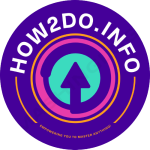1. Understanding the Basics
What is a Mobile App?
A mobile app is a software application designed to run on mobile devices such as smartphones and tablets. It offers users a specific set of features and functions to enhance their mobile experience.
Why Build a Mobile App?
Building a mobile app can bring numerous benefits to individuals and businesses alike. Mobile apps provide a direct and personalized way to engage with users, increase brand visibility, generate revenue, and improve overall customer satisfaction.
Factors to Consider Before Starting
Before diving into app development, there are several factors you should consider. Firstly, define your app's target audience and understand their needs and preferences. Secondly, conduct market research to identify competitors and analyze their strengths and weaknesses. Lastly, set clear goals and objectives for your app to ensure a focused development process.
2. Defining Your App's Purpose
Identifying Your Target Audience
To build a successful mobile app, you must understand your target audience. Who are they? What are their demographics? What problems or needs can your app address? Conduct thorough market research to gain insights into your potential users and tailor your app's features and design to cater to their requirements.
Analyzing Competitors
Analyzing your competitors is crucial to gain a competitive advantage in the market. Research existing apps that offer similar functionalities or target the same audience. Identify their strengths and weaknesses, and find opportunities to differentiate your app from the competition.
Setting Clear Goals and Objectives
Before starting the development process, set clear goals and objectives for your app. These goals will guide your decision-making throughout the development cycle. Define what you want to achieve with your app, whether it's acquiring a specific number of users, generating revenue, or enhancing user engagement.
3. Sketching Your App's Design
Creating Wireframes
Wireframes are the blueprint of your app's design. They provide a visual representation of the app's layout, structure, and functionality. Sketch out the basic screens and interactions of your app using wireframing tools to get a clear idea of the user flow.
Designing User Interface (UI)
The user interface (UI) of your app plays a vital role in user satisfaction and engagement. Design an intuitive and visually appealing interface that aligns with your target audience's preferences. Use color schemes, typography, and icons that reflect your brand identity and create a delightful user experience.
Planning User Experience (UX)
User experience (UX) focuses on enhancing user satisfaction by improving the usability and accessibility of your app. Consider user personas, user journeys, and information architecture to create a seamless and intuitive app flow. Conduct usability tests and gather feedback to refine the user experience before proceeding to development.
4. Choosing the Right Technology Stack
Native vs. Hybrid App Development
When building a mobile app, you have two primary options: native or hybrid development. Native apps are platform-specific and provide a high level of performance and access to device features. Hybrid apps, on the other hand, use web technologies and can be deployed on multiple platforms. Consider your app's requirements and target audience to decide which approach is most suitable.
Selecting the Appropriate Platform
Choosing the right platform is essential for maximizing your app's reach. iOS and Android are the two dominant platforms, each with its own set of guidelines and development tools. Consider your target audience's device preferences, market share, and revenue potential to make an informed decision.
Exploring Backend Options
The backend of your app handles data storage, user authentication, and server-side logic. Explore different backend options such as cloud-based solutions or building a custom server. Consider factors like scalability, security, and ease of development when choosing the appropriate backend technology.
5. Developing the App's Backend
Setting up a Development Environment
Before diving into backend development, set up a development environment that includes the necessary tools and frameworks. Install an integrated development environment (IDE), version control system, and relevant libraries to streamline the development process.
Writing Backend Code
Develop the backend functionality of your app using the chosen technology stack. Implement features like user authentication, data storage, APIs, and server-side logic. Write clean and well-documented code that adheres to coding best practices to ensure maintainability and scalability.
Implementing Data Storage and Retrieval
Choose a suitable database solution for your app's data storage needs. Whether it's a relational database or a NoSQL database, ensure efficient data storage, retrieval, and data synchronization. Optimize the database queries for better performance and implement appropriate security measures to protect user data.
6. Building the Frontend Interface
Translating Design to Code
Now it's time to transform your app's design into code. Use front-end development technologies such as HTML, CSS, and JavaScript to build the user interface and implement the desired features. Ensure responsiveness and compatibility across different screen sizes and devices.
Incorporating User Feedback
During the development process, gather feedback from potential users or a focus group. Incorporate their suggestions and address any usability issues to improve the overall user experience. Iteratively refine your app's frontend based on user feedback and testing results.
Optimizing for Different Screen Sizes
With the vast array of mobile devices available, it's crucial to optimize your app for different screen sizes. Utilize responsive design techniques to ensure that your app looks and functions well on smartphones and tablets of various dimensions. Test your app on different devices to verify its responsiveness.
7. Integrating Features and Functionality
Adding User Authentication
Implement a secure user authentication system to protect user data and provide personalized experiences. Use industry-standard protocols and encryption techniques to ensure the confidentiality and integrity of user credentials. Enable features like account creation, login, password reset, and social media login options.
Implementing Push Notifications
Push notifications are a powerful tool to engage and retain app users. Integrate a push notification service into your app to send timely and relevant updates, alerts, or promotional messages to users. Personalize notifications based on user preferences to enhance user engagement and drive app usage.
Incorporating Social Media Integration
Social media integration allows users to seamlessly connect and share content from your app. Implement social login options, social sharing buttons, and deep linking to social media platforms to facilitate user interactions. Leverage social media integration to expand your app's reach and increase user acquisition.
8. Testing and Debugging
Creating Test Cases
Thorough testing is crucial to ensure the quality and reliability of your app. Create comprehensive test cases that cover various functionalities, use cases, and edge cases. Test the app's performance, responsiveness, and compatibility across different devices and operating systems.
Conducting Functional Testing
Execute functional testing to verify that all features and functionalities are working as expected. Identify and resolve any bugs, crashes, or performance issues encountered during the testing process. Perform regression testing after bug fixes or feature updates to ensure the stability of the app.
Debugging and Fixing Issues
During the testing phase, identify and debug any issues or errors that arise. Use debugging tools and error tracking systems to pinpoint the root causes of issues. Implement necessary fixes and optimizations to enhance the app's stability and performance.
9. Launching and Publishing Your App
App Store Guidelines and Policies
Before launching your app, familiarize yourself with the guidelines and policies of the respective app stores (e.g., Apple App Store, Google Play Store). Ensure that your app complies with the guidelines, meets the quality standards, and follows the required submission procedures.
Optimizing Metadata for App Stores
To improve the visibility and discoverability of your app, optimize its metadata for app stores. Craft a compelling app title, description, and keywords that accurately represent your app's features and functionalities. Use relevant screenshots and app preview videos to showcase the app's unique selling points.
Promoting Your App
Once your app is live, it's time to promote it to reach your target audience. Leverage various marketing channels such as social media, content marketing, influencer partnerships, and paid advertising. Engage with users through regular updates, feature enhancements, and responding to user reviews and feedback.
10. Maintaining and Updating Your App
Monitoring Performance and Analytics
Continuously monitor your app's performance and gather user analytics to gain insights into user behavior and app usage patterns. Utilize analytics tools to track key performance indicators (KPIs) such as user retention, conversion rates, and engagement metrics. Use this data to make data-driven decisions for app improvements.
Gathering User Feedback
Encourage users to provide feedback and ratings for your app. Actively listen to user suggestions and bug reports to identify areas of improvement. Regularly update your app based on user feedback to enhance user satisfaction and loyalty.
Continuously Improving and Updating
The mobile app landscape is constantly evolving, and user expectations change over time. Stay updated with the latest technologies, trends, and user preferences. Continuously improve and update your app by adding new features, enhancing existing functionalities, and addressing user needs and market demands.
FAQs (Frequently Asked Questions)
Q: How long does it take to build a mobile app from scratch?
A: The time required to build a mobile app from scratch can vary depending on various factors, such as the complexity of the app, the team's expertise, and the development approach. It can range from a few weeks to several months.
Q: Do I need coding skills to build a mobile app?
A: While having coding skills can be advantageous, it's not a prerequisite for building a mobile app. There are various no-code and low-code platforms available that allow you to create apps without extensive programming knowledge.
Q: What is the cost of developing a mobile app from scratch?
A: The cost of app development depends on several factors, including the app's complexity, features, design, and the development team's rates. It's recommended to consult with app development agencies or freelancers to get accurate cost estimates based on your specific requirements.
Q: How can I monetize my mobile app?
A: There are several monetization strategies for mobile apps, including in-app purchases, subscription models, advertisements, sponsorships, and selling merchandise or digital goods. Choose a monetization strategy that aligns with your app's target audience and value proposition.
Q: How can I protect my app idea from being copied?
A: While it's challenging to completely prevent your app idea from being copied, you can take certain measures to protect your intellectual property. Consider filing for a patent or copyright, signing non-disclosure agreements (NDAs) with team members or collaborators, and keeping your app's development confidential until it's launched.
Q: How can I market my mobile app effectively?
A: Effective app marketing involves a combination of strategies, including app store optimization (ASO), social media marketing, content marketing, influencer partnerships, public relations, and paid advertising. Develop a comprehensive marketing plan tailored to your target audience and budget to maximize your app's visibility and reach.
Conclusion
Building a mobile app from scratch requires careful planning, design, development, and promotion. By following the steps outlined in this comprehensive guide, you can bring your app idea to life and create a successful mobile application. Remember to understand your target audience, focus on user experience, and continuously iterate and improve your app to meet evolving user needs and market demands.








